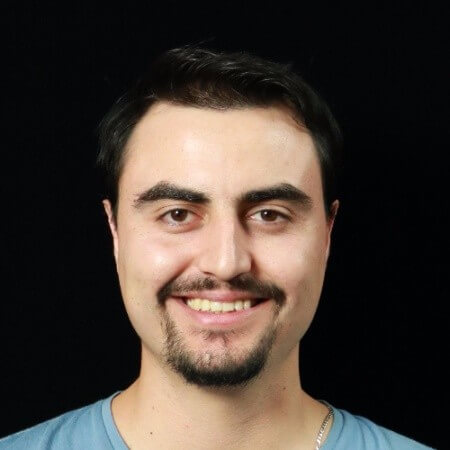After a few years of traditional Hackathons, this year’s edition was slightly different. Coined the “Idea-thon,” it brought two new categories with the intention to foster participation from a broader spectrum of employees.
We take pride in being at the forefront of technological advancement as an innovative AI company. It’s this commitment to pushing the boundaries of what’s possible in the realm of AI that drives us to encourage and support initiatives that foster innovation, and is ultimately why we held this event.
People from different backgrounds and departments had the opportunity to explore innovative ideas and proposals to improve the Hyperscience product, CX, or internal processes, or solve existing problems within the company. This provided an outstanding opportunity to think outside the box and come up with bold new ideas to delight our customers, peers, and the jury.
What is an Idea-thon?
The idea-thon was an expanded variation of a typical hackathon. Traditionally, hackathons are opportunities for employees to experiment with new ideas and technologies. They’re meant to be fun for people participating, as well as advantageous for companies, as many of the proposals developed during the event become a future part of the product—and can offer a competitive advantage when implemented.
This year, in addition to the standard hackathon format, we extended the format of the event to encourage greater participation beyond engineering and product. We did this by incorporating two new categories: Shark Tank and Flows Shop.
Shark Tank
Named after the TV show, this category was for pitching exciting product proposals or features. These were evaluated on their narrative, customer value, contribution to Hyperscience’s goals, and clarity. Thankfully none of the judges were as ruthless as those on TV, and all participants escaped unharmed.
Flows Shop
The goal of this category was for participants to create an innovative workflow (learn more about Hyperscience Flows here) addressing customers’ recurring problems. These ideas were evaluated on customer impact, how the proposed feature would benefit the company’s goals, and the cost of making the feature production-ready.
With new formats and categories, people from more diverse backgrounds and skill sets are able to work on and develop an idea, and present it to the rest of the company. The idea-thon was born.
What Happened?
This year, the idea-thon was centered around 3 key themes:
- Expansion: features or improvements that can help customers use the Hyperscience Platform to its full potential.
- Adoption: features or improvements improving our product’s CX, including ease of use, performance or troubleshooting.
- Innovation: Integration with new technologies (for example: GPT-4, Einstein, Bard, etc) or features that are not part of our main product that could open new opportunities.
Employee Response
The event took place from June 23 through 26, where 8 teams participated. On June 27, each team presented their project to the company, where a panel of Judges and a popular vote determined the winning teams.
Feedback for the event was very positive, with employees enjoying the opportunity to collaborate and contribute to product development with some out-of-the-box thinking.
Senior Product Manager Radi Rangelov had nothing but good things to say about his experience. “I loved the energy of the whole thing,” he said. “As someone newer to the organization, it was amazing to see the spirit of innovation within the company. Everyone was excited—largely because of the opportunity for an idea to flourish and become part of the product down the road.”
Senior Software Engineer Adam Bolcsfoldi shared similar thoughts. “The enthusiasm that went into the event was great. I really enjoyed the rapid iteration on something that could be immediately impactful for both Hyperscience and our customers.”
The Winning Proposal: No Code, No Problem
A lot of work goes into every project as teams scramble to put in as much work as possible in such a short time frame. Here’s a closer look at the winning proposal, titled, “No Code, No Problem,” as described by the team.
Our overall idea was that currently, our customers often need bespoke workflows to automate their business processes because there’s always something “custom” about their process.
At a macro level, the problem is that automating these complex processes usually requires a developer, and there’s just not enough of those to meet the demand.
By empowering the process owner to build their own flows, we can cut out all the middle-men, helping users get to their automated solution faster. This way, customers are also more likely to repeat the process for other processes—leading to easier expansion within existing accounts.
To start small, we took the most developer-centric part of building a flow—creating a custom code block—and looked at how we could apply GPT-4 to go from natural language to custom python code that executes in HS’s workflow orchestration.
Though there could only be one winning team, many of these ideas will become part of our product roadmap to be included in the product in the next few releases.
Encouraging Collaboration for Customer-Centric Breakthroughs
Working in a tech company doesn’t always leave room for free-hand experimentation or ideation of new proposals. However, many great ideas came from side-projects—take Twitter, Slack or Github, as a few examples. Holding events that can gather people from different backgrounds together to work on an innovative idea for a few days is always a rewarding experience for the company and the participants.
And most importantly, these events are fantastic sources of breakthroughs that can improve the life of our customers by delivering highly innovative, yet unexpected features.

